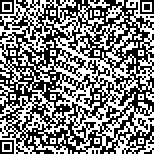| This article has been:Browse 2181Times Download 2840Times |

scan it! |
|
|
| DOI:10.13522/j.cnki.ggps.2019220 |
|
| Sduty on Adaptation of Reference Crop Evapotranspiration Calculation Methods under Stereo Climatic Conditions in Yunnan Province |
|
GAO Rong, WU Lei, GU Shixiang*, ZHAO Shaoxi, LI Lei, SU Jianguang, YANG Tao
|
|
Yunnan Institute of Water & Hydropower Engineering Investigation, Design and Research, Kunming 650021, China
|
| Abstract: |
| 【Objective】This paper is to reasonably estimate the reference crop evapotranspiration under the special climate conditions in Yunnan Province, which providing reliable basis for the design of irrigation system and water resource allocation, and then achieving the purpose of water conservation and rational utilization of water resources.【Method】We based on the data of 14 meteorological stations in 6 irrigation water zones of Yunnan Province and used the FAO recommended ET0 standard calculation method (FAO-56 Penman-Monteith) to evaluate the applicability of six commonly used ET0 calculation methods with criteria and methods which including standard deviation (δ), relative error (RE), consistency index (IOA), Nash-Sutcliffe coefficient (NES), linear regression method and inverse distance weighted average method. 【Result】ET0 increased with the decrease of rainfall. The change rule of monthly ET0 was basically the same in each partition. Influenced by the monsoon climate of Yunnan special low latitude plateau, it showed a change law of bimodal curve, different from other provinces. The peak value was in April and August, respectively. The significant “channel barrier” effect made the climate difference between regions significant, which made the monthly ET0 differences of algorithms different among regions. The applicability of ET0 calculation methods in different level years was not consistent. The absolute coefficient of linear regression (R2) of ET0 calculated by other methods and FAO-56 Penman-Monteith method were all greater than 0.9. FAO-79 Penman method and Irmark-Allen method were significantly correlated in six regions, and FAO-24 Penman method was only significant in one region. The RE values of each methods in different partition were small, ranging from 0 to 0.28. FAO-79 Penman method has the best performance, and the IOA and NSE were 0.65~0.96 and 0.58~0.89 respectively. The applicability of different reference crop evapotranspiration calculation methods in different regions was obviously different. 【Conclusion】 The FAO-79 Penman method has the strongest applicability and the highest accuracy in Yunnan except for the dry-hot valley. The values of delta, RE, IOA and NES are 0.01~0.022, 0.04~0.05, 0.88~0.96 and 0.58~0.89, respectively. FAO-24 Penman method has the worst application in the whole province, and its error is larger than 12%. It is not suitable for ET0 calculation. The applicability of FAO-24 Radiation method in Yunnan Province is also better after FAO-79 Penman method. Except for Northwest Yunnan, the relative error of FAO-24 Radiation method is less than 8%. This method is especially suitable for Southeast Yunnan, where the altitude is relatively low. The relative error is only about 2%. Hargreaves-Samani method has better applicability in dry-hot valley and central Yunnan, and the values of delta, RE, IOA and NES are 0.019~0.024, 0.01~0.02, 0.93~0.96 and 0.78~0.83, respectively. |
| Key words: Yunnan Province; stereo climate; reference crop evapotranspiration; FAO-Penman-Monteith method; applicability |
|
|